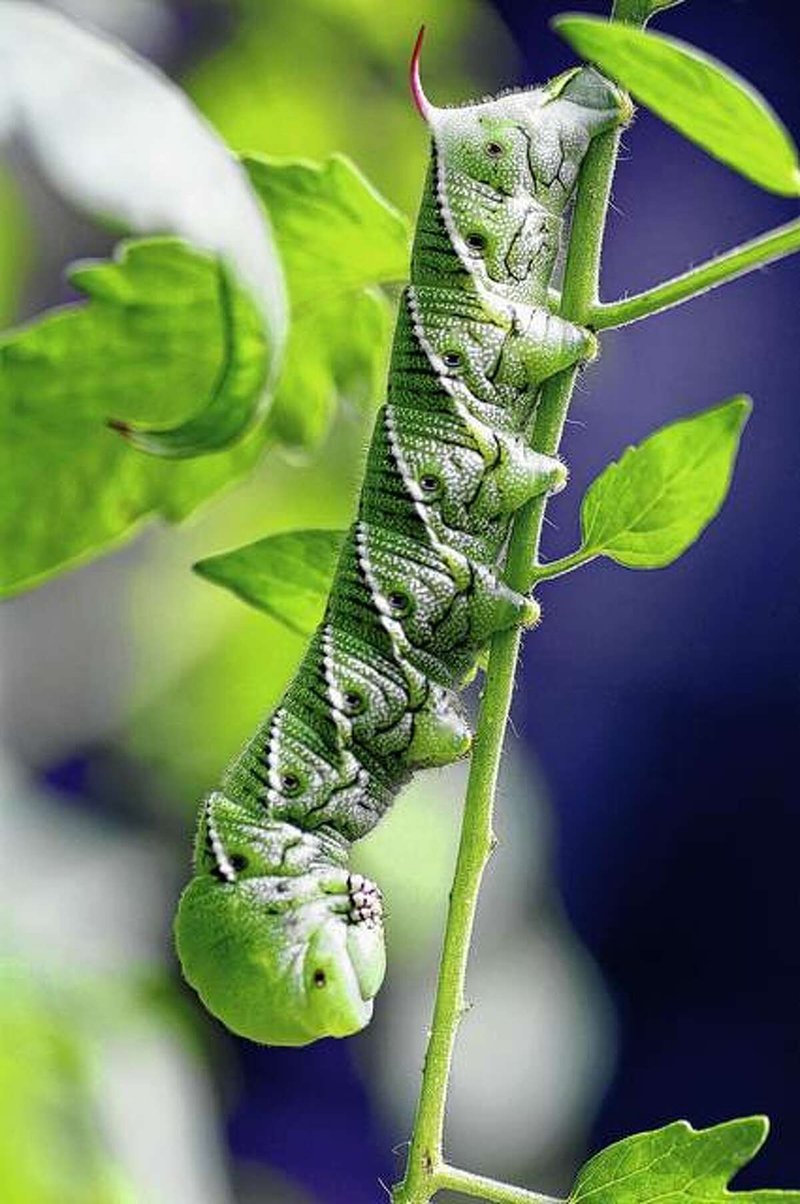
Imagine a tiny monster lurking in your backyard, feasting on your carefully nurtured plants. You’re not alone in this struggle. Plenty of gardeners have faced the same challenge. It’s sort of like finding a rogue party crasher at your carefully planned gathering. But there’s good news! With the right information, you can reclaim your garden and keep those pesty intruders at bay.
In this article, we’ll dive deep into the world of hornworms, particularly the notorious tomato hornworm (which loves to nibble on tomatoes) and the tobacco hornworm. We’ll explore their life cycle, how to spot them, and, most importantly, how to manage them effectively without turning your garden into a battleground.
What Exactly Are Hornworms?
Hornworms are the larval stage of certain moth species, primarily the Five-spotted Hawkmoth and the Tobacco Hornworm Moth. They’re known for their striking appearance, featuring a bright green body and a distinctive horn-like projection at the rear. This horn is a bit of a misnomer since it’s not dangerous—think of it more as a quirky accessory that makes these caterpillars look like something out of a fantasy novel.
You might be wondering why these little guys are such a problem. Hornworms can grow up to 4 inches long and can devour a significant amount of foliage in just a day or two. If you enjoy growing tomatoes, peppers, or eggplants, you should keep a watchful eye, as these are their favorite snacks. Hornworms might seem gross, but they play a role in the ecosystem as well—they eventually turn into beautiful moths that help pollinate flowers.
Understanding their life cycle can also provide insight into the best control methods. Hornworms begin as eggs laid by adult moths. Once they hatch, they enter the destructive caterpillar stage, which typically lasts around 3–4 weeks before they pupate into moths. This means you’ll want to act quickly if you spot them in your garden!
How to Identify Hornworms
Spotting hornworms can be a bit tricky due to their excellent camouflage. They blend seamlessly with green foliage, making them look like a part of the plant. However, there are a few indicators to watch for:
- Color: Hornworms are typically a bright green or occasionally a light brown color. This helps them blend in, but it also makes them easy to overlook if you’re not looking carefully.
- Size: When fully grown, hornworms can reach up to four inches long. If you see a caterpillar that size, it’s likely a hornworm!
- Damage: Look for signs of leaf loss or fraying edges on your plants. If you notice that leaves seem to be disappearing overnight, hornworms could be the culprits.
- Frass: Hornworms leave droppings as they munch away. This frass looks like small black pellets scattered near the damaged plants.
Once you know what to look for, spotting hornworms becomes easier. Honestly, keeping a keen eye on your plants is one of the best preventive measures you can take.
How Hornworms Affect Your Garden
If left unchecked, hornworms can do significant damage to your garden, particularly to tender plants like tomatoes, peppers, and eggplants. They eat the leaves, stems, and even the fruit, leading to reduced yields and stressed plants. Here’s the thing: once they start feeding, they can consume a lot of plant material quickly, so it’s vital to catch them early.
Beyond just the immediate damage, the presence of hornworms can have a psychological effect. You put so much love and effort into your garden, and seeing it ravaged by these pests can be disheartening. It’s essential to remember that every gardener faces challenges. Effective management can help you protect your plants without feeling overwhelmed.
Keep in mind that hornworms can also attract predators. Birds, for example, love to munch on these caterpillars. So, while hornworms might be a nuisance, they can also indicate a vibrant ecosystem in your garden!
Managing Hornworms: Natural Methods
If you find hornworms wreaking havoc in your garden, don’t worry! There are several natural methods to control them without resorting to harsh chemicals. Here are some effective strategies you can use:
- Hand-Picking: One of the simplest ways to remove hornworms is to pick them off your plants by hand. Wearing gloves can help if you’re squeamish about handling them. Just make sure to check the undersides of leaves, where they often hide!
- Use Neem Oil: This natural pesticide is derived from the seeds of the neem tree. It disrupts the feeding and breeding of hornworms, making it an excellent organic option. Mix it according to the package instructions and spray it on affected plants.
- Encourage Beneficial Insects: Certain insects, like parasitic wasps, naturally prey on hornworms. By planting wildflowers or herbs that attract these helpful critters, you can boost their populations in your garden.
- Companion Planting: Some plants can deter hornworms. For instance, planting marigolds alongside tomatoes can confuse these pests and reduce their numbers.
By employing these methods, you can take back control of your garden while also maintaining its natural balance.
When to Use Chemical Control
While natural methods are often the best first line of defense, there might be times when chemical control becomes necessary. If you have a severe infestation that threatens the health of your plants, you might consider using pesticides.
Be sure to choose a pesticide specifically designed for caterpillars and follow the instructions carefully. Always apply these products in the early morning or late evening to minimize the impact on beneficial insects. Additionally, allow some time between application and harvesting for the pesticide to dissipate.
Ultimately, it’s all about finding the right balance. While chemicals can be effective, they should be a last resort after you’ve tried more natural approaches.
Preventing Future Hornworm Infestations
Once you’ve dealt with a hornworm problem, it’s essential to implement measures to prevent future infestations. Prevention is key to keeping your garden healthy. Here’s how to stay one step ahead:
- Crop Rotation: Change the location of your crops each season. This can help disrupt the life cycle of hornworms and prevent them from returning in large numbers.
- Regular Inspections: Make it a habit to inspect your plants regularly. The sooner you catch any hornworms, the easier it will be to manage them.
- Maintain Plant Health: Healthy plants are more resistant to pests. Ensure they have plenty of nutrients and proper watering to keep them strong and vibrant.
- Debris Removal: After the growing season, clear away any dead plants or debris where caterpillars can overwinter. This reduces the chances of a new wave of pests in the spring.
By incorporating these practices into your gardening routine, you’ll create a more resilient garden that can better withstand pests like hornworms.
Hornworms might seem intimidating at first, but with the right knowledge and strategies, you can successfully manage them and protect your beloved plants. Remember that even experienced gardeners face this challenge, so you’re not alone.
Embrace the learning process, and don’t hesitate to experiment with different control methods to see what works best for your garden. With careful observation and a proactive approach, you can keep your garden thriving without turning it into a battleground against hornworms. Happy gardening!

